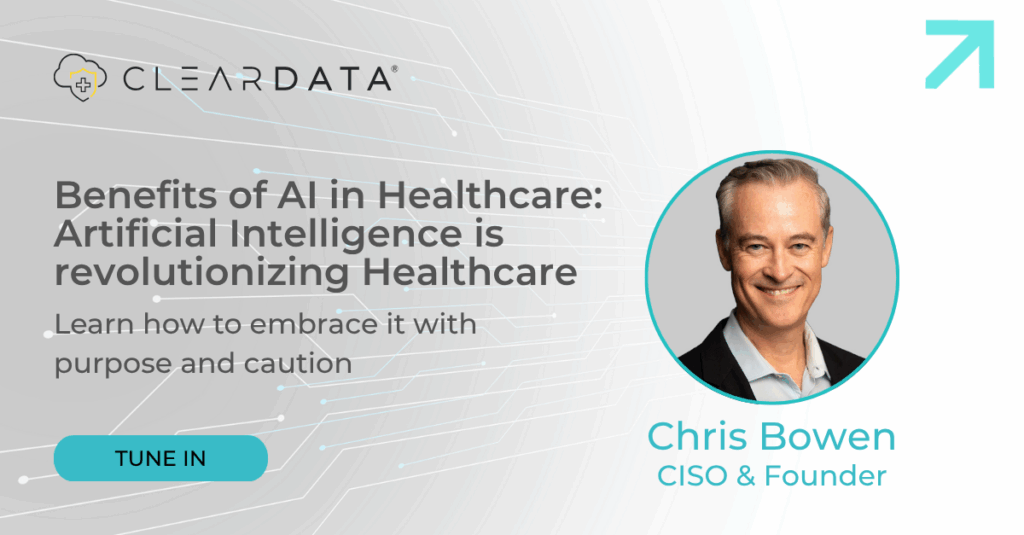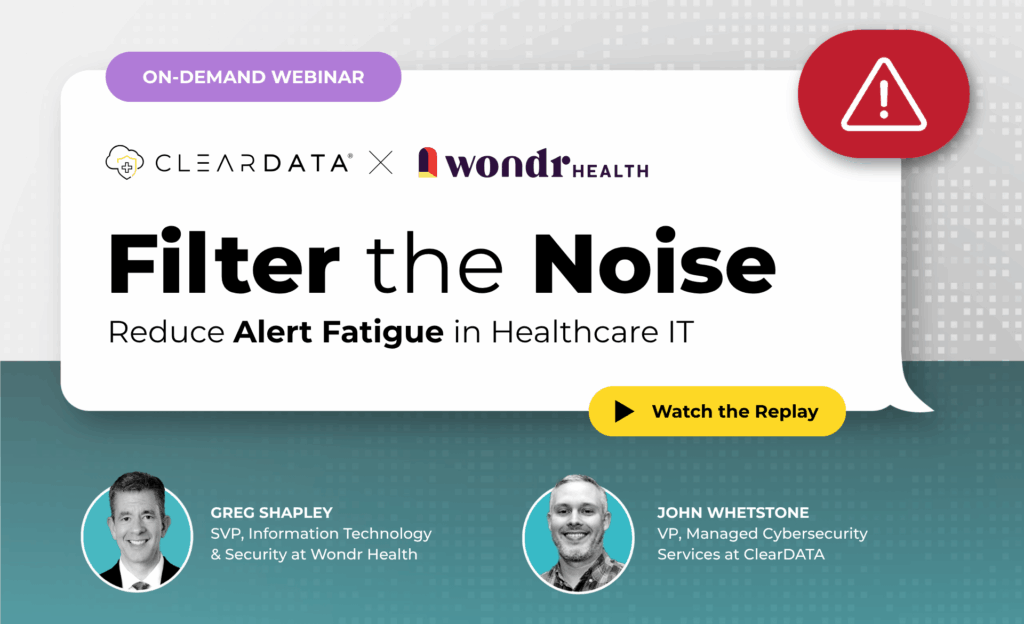With the cloud, healthcare organizations can be freed from many of the limitations imposed by previous technologies. It requires no major capital investment for infrastructure deployments, which drives unwieldy ongoing maintenance agreements, is globally available, and is almost infinitely elastic.
It’s that elasticity — that dynamic adaptation of capacity — that can help reshape a healthcare organization’s offerings.
Whether it’s developing drugs faster or giving physicians instant access to their patients’ vital data, or simply making it easier to know the status of a claim, this newfound agility in the cloud is an integral step up the ladder of technology.
Three Reasons Why Agility is So Important in Healthcare IT
Transformation
Sci-fi screenwriters like to muse about, and IT professionals like to joke about, some dark fate where machines take over the world — but we often don’t consider the ones that are holding us hostage right now. For healthcare IT, many have discovered their legacy systems to be just that. Fewer and fewer IT organizations in healthcare find themselves at the mercy of the limitations of traditional dedicated servers and aging infrastructures, such as mainframe or tape systems. They’re going through a transformative period as many of their own applications have become subscription-based, on-demand software (SaaS), or are in the process of moving to it. As they migrate to these kinds of architectures, oftentimes already running in the public cloud with the healthcare organization even realizing it, more agility and growth can be realized that often also results in increased efficiencies and cost optimization.
Cost Containment
In many cases, when you can change the way you serve the application — whether moving to cloud native technology solutions, such as containers, serverless, or the unstructured database technology the public cloud providers offer — you can be agile and save money at the same time.
Security
Massive security investments that have been made inside the public cloud drive agility. Historically, compliance and security were typically barriers to getting new applications, either in the public cloud or even inside a data center. But with public cloud providers investing a significant percentage of their own R&D dollars into either machine learning-based security or other compliance/security tooling, IT organizations are realizing that the pace at which they can individually provide security innovation can’t keep up with the pace that is happening in the public cloud. The fact is the public cloud providers develop compliance/security–based tooling, including integration capabilities to the tools you already use today, making them available as cloud-based marketplace applications.
What Agility in the Cloud Means to Specific Healthcare Segments
Payers
Insurance companies are using their new cloud-enabled agility to transform their members’ experiences. Members are finding it easier to get an update on a claim, submit a claim dispute, or sign up for a new plan. The payer experience is focused on the status of insurance premium payments, the number and amount of settlements, and the like. Forward-thinking payers are creating a digital experience that helps patients schedule appointments and submit claims. These kinds of capabilities often use infrastructure as code technology that only runs and charges the payer at the time that a patient actually makes a request to see a status claim, etc. By leveraging the newer cloud technologies in their software development, payers are enjoying increased flexibility in their day-to-day operations —making the payment and claim process easier for policyholders, reducing the cost of IT within the organization, and the tracking of payments and the handling of settlements simpler for payers.
Providers
They are typicall both a hybrid and multi-cloud approach. With hybrid, you see a combination of deploying assets inside of their data center because, from a financial and operational perspective, hospitals probably can’t wake up tomorrow and abandon their infrastructure for fully cloud. They have to mix in both. So, to bolster their agility, some hospitals are deploying net-new applications—typically EMRs and EHRs — that are SaaS-enabled on the public cloud. The result is greater flexibility to increase or decrease compute capacity on the fly, scaling up when the enterprise needs it and back down when it’s done — and only paying for what it uses.
Health IT companies, including Cerner, have announced that AWS will be a development platform for their cloud-based automated library solution, Millennium. According to its blog, Cerner believes this partnership will help accelerate health care innovation across the globe, resulting in better patient health outcomes. Other healthcare players are recognizing the benefits of cloud migration. Providers are seeing an opportunity to move their EMRs into a more secure, agile platform so they don’t have to run ephemeral infrastructure in their data centers, much less worry about connectivity across the hospital network to delay serving the healthcare application in a timely fashion. Beyond the greater agility from a scale up/scale down perspective, it also gives providers significantly more up-high availability as the public cloud will carry them when they lose a node or lose an environment — they’ll still have connectivity for their caregivers to access their patients’ records.
Life Sciences Organizations
They are taking data sets from previous or current clinical trials, de-identifying those patient sets and using machine learning to improve the response time of clinical trials. When it comes to speed to market, Matt Ferrari, Former CTO at ClearDATA offers, “This may be one of the best agility stories I can think of across any healthcare segment.” He says that the organizations he worked with are looking to reduce the time for bringing a drug to market by a year on average. But that’s not all. “In one scenario a company saved over $1.4 billion in R&D just by using cloud technology rather than the traditional methods of running a clinical trial across facilities around the country, then having to get permission from everyone to use their data,” he noted.
Healthcare IT Companies
Another great agility story features a mobile Electronic Health Records company that had tremendous operational costs from its data center and managed service provider. Then, it moved to more agile methodologies around software development—from containers to serverless all the way to blue/green deployment. Happy ending: it rid itself of legacy data and unnecessary costs, enjoyed increased security (no more unpatched systems), and said goodbye to all the intricate considerations that typically come with data center deployment. They were then able to focus on innovating their healthcare application, pushing new code rather than maintenance infrastructure.
How to Maximize the Cloud’s Ability to Scale More Easily
- Use ongoing cost and visibility optimization tooling to understand your spend, your cost, and how much can be saved by moving a certain size workload or application into the public cloud. These tools can help you tag your assets and, in turn, spend, while also providing you insights into how your spend will grow over time.
- Understand what healthcare-specific applications and resources are inside the public cloud — and for the sake of accountability — who actually owns them.
- Utilize ongoing reference architecture reviews to make sure you’re taking advantage of the latest and greatest: best practices, the right reference architectures or framework, etc. It’s imperative if you wish to keep up with the cloud’s rapid change while maintaining compliance.
Using the Power of Automation to Address Cloud Compliance
From an agility as well as a compliance perspective, change management is an ongoing challenge — possibly the biggest “gotcha” in the cloud. One way to help alleviate that is to use automation to drive repeatability. For example, automation can map regulatory framework requirements to the current state of your environment, and when something drifts out of compliance it can detect it, log it and remediate it.
Another option is to use complementary technologies i.e., Splunk software and others that can perform intrusion detection scanning, vulnerability scanning, and send alerts—when there is any deviation from a state of compliance—to the organization’s Security Operations Center (SOC) or compliance officer so they can be triaged and remediated.
An Agile Partner
With its exclusive experience in the healthcare space, ClearDATA is the trusted partner that genuinely understands a healthcare organization’s growing list of technology needs, making sure you can get the most out of the agility that comes with flexible computing power.
Agility is no longer a “nice-to-have,” but an essential evolutionary characteristic that organizations need to thrive in a healthcare landscape demanding constant change.


